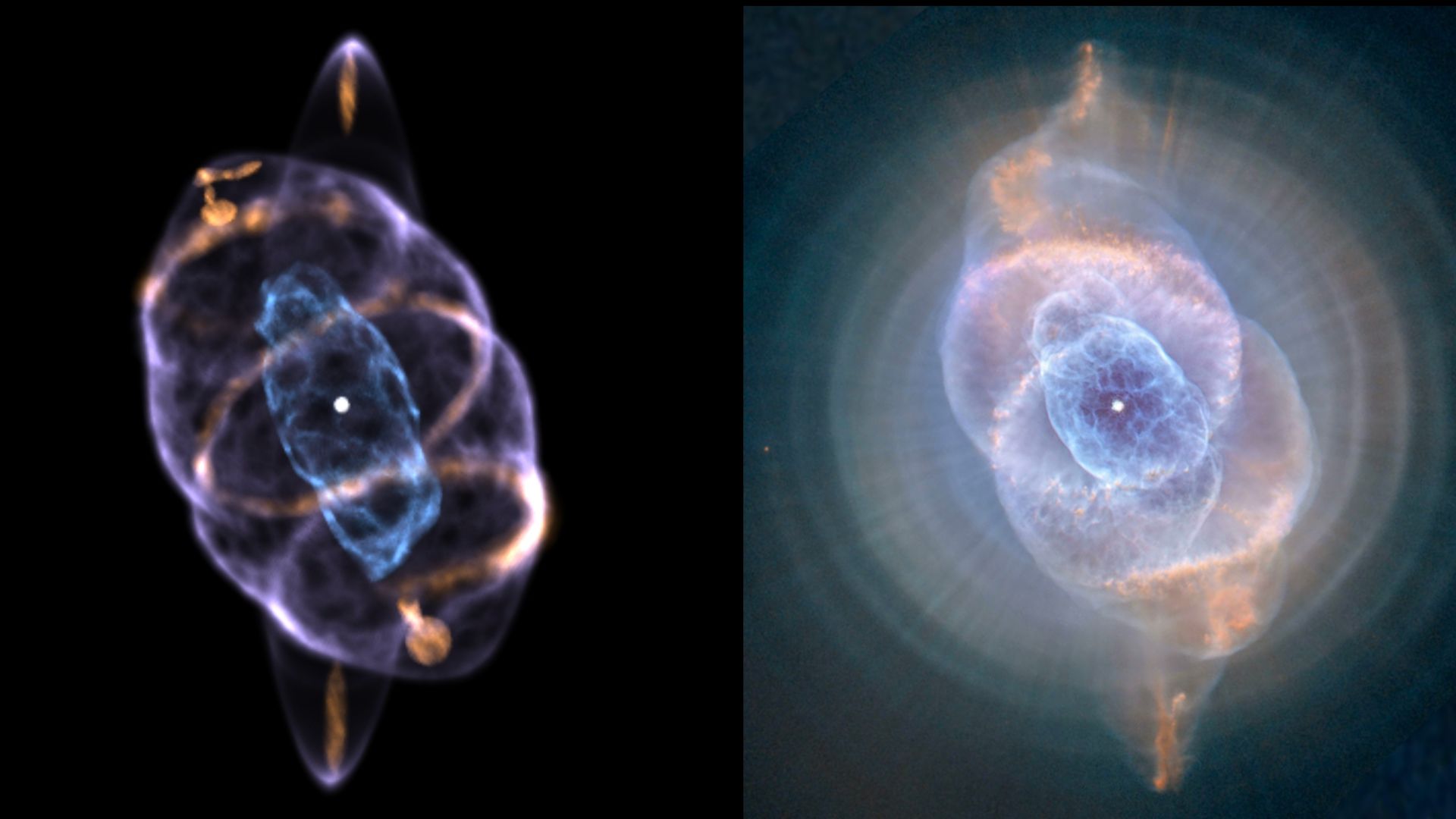Astronomers discover secret star at the center of gorgeous Cat's Eye Nebula
By Brandon Specktor published about 5 hours ago
The 'most complicated' nebula in the galaxy reveals its big secret.

A 3D model of the Cat's Eye Nebula (left) compared to a Hubble Space Telescope image (right) of the same. (Image credit: Ryan Clairmont (left), NASA, ESA, HEIC, and The Hubble Heritage Team (STScI/AURA) (right))
Nothing passes gas quite like a dying star.
When a star roughly the size of the sun approaches the end of its life, it expels its outer layer of gas into a bright and beautiful bubble known as a planetary nebula. At the center of each bubble, a weakened star continues irradiating its surroundings, sculpting the gas into colorful shapes that astronomers have likened to crabs, reptiles and terrifying screaming faces.
One of the strangest and most baffling of these cosmic cloud paintings is the Cat's Eye Nebula, located about 3,000 light-years from Earth. Seemingly made of several overlapping bubbles of blue gas with long, streamer-like filaments wrapped tightly around them, the nebula has defied clear explanation for centuries.
One of the strangest and most baffling of these cosmic cloud paintings is the Cat's Eye Nebula, located about 3,000 light-years from Earth. Seemingly made of several overlapping bubbles of blue gas with long, streamer-like filaments wrapped tightly around them, the nebula has defied clear explanation for centuries.
Their computer-generated map reveals a pair of perfectly symmetrical rings swirling around the entire length of the nebula's outer shell. According to the researchers, there's only one possible cause of these rings' symmetry: a double-barreled burst of energy known as a precessing jet.
More:
https://www.livescience.com/cats-eye-nebula-mystery-explained
